Leaf: Alternate, simple, pinnately-veined, ovate, with an acute tip and cordate base, singly or irregularly doubly, sharply serrate margins, 2 to 4 inches long, petiole is stout and pubescent, dark shiny green above, paler below.
Flower: Species is monoecious; preformed, green male catkins near the end of the twig, 3/4 to 1 inch long; females are upright, 1/2 to 3/4 inch long, green tinged in red, appear or elongate (males) in mid-spring.
Fruit: Cone-like aggregate, brown, 1 to 1 1/2 inches long, scales hairless or nearly so, containing very small 2-winged nutlets, ripen and break apart in late summer and fall.
Twig: Twigs are slender, reddish brown and lenticellate with a wintergreen smell when cut. On older trees, spur shoots are apparent. Terminal buds are absent, lateral buds two toned, green and brown.
Bark: Reddish brown to black on young trees, later gray to nearly black; eventually breaking up into large, thin, irregular, scaly plates.
Form: A medium sized tree with a single straight trunk reaching up to 60 feet tall.
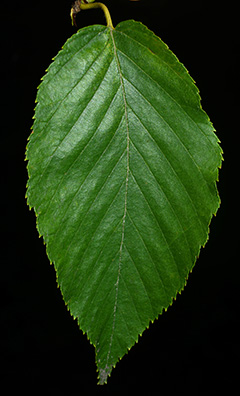

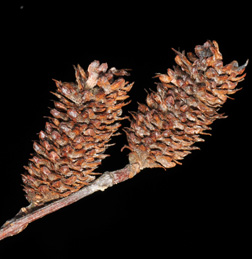
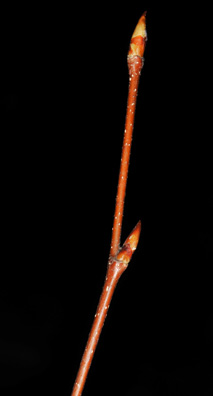
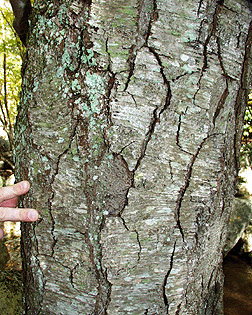
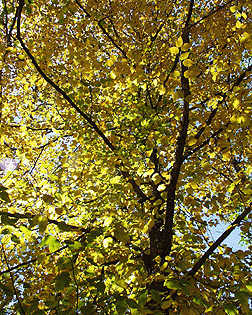

Notes:



















































































